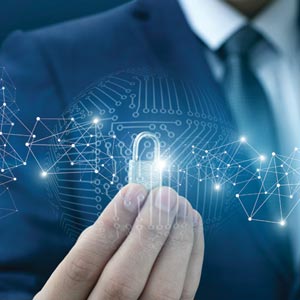THANK YOU FOR SUBSCRIBING
Editor's Pick (1 - 4 of 8)

Top 2019 Cybersecurity Trends in Asia Pacific to Watch
Francis Prince Thangasamy, Vice President, Product Management, Asia Pacific, CenturyLink


Francis Prince Thangasamy, Vice President, Product Management, Asia Pacific, CenturyLink
Powering private and public cloud data centers, servers are both vast in number and far more powerful than PCs and mobile devices, presenting hackers with more processing power to mine more crypto-currency and scale their earnings.
Rising focus on insider threats
While enterprises pay more attention to external attacks, they must not lose sight of the threats from within.
Employees remain one of the top causes of data breaches, both malicious and negligent. Other sources of insider threats include cybercriminals working from within companies and third-party contractors. In Asia Pacific, insider-related incidents caused enterprises to lose approximately US$5.88 million in a space of 12 months.
Despite these disconcerting findings, companies are not doing enough to drive a culture of cybersecurity. For example, 36 percent of organizations in Singapore do not have employee security awareness training program and 44 percent say they do not have an incident response process.
There will be an increasing need to adopt a security approach that takes into account both internal and external threats. A holistic threat defense platform that delivers connected security solutions coupled with global threat visibility will become increasingly important for organizations.
Meanwhile, organizations need to ensure that everyone plays a part in cybersecurity, from the boardroom to the cubicle. C-level leaders and all employees must be educated on cyber risks today and take steps to be aware of their potential for repercussions.
Increasing collaboration between private-public partnerships to fight threats
Organizations, including industry experts and governments, are gradually realizing that the cyber threat landscape is evolving too quickly for a single entity to keep up. Therefore, many will turn to partner to improve their cybersecurity posture. In Asia Pacific, a typical organization does not have cybersecurity as its core strength and usually hires a lean IT team to manage databases and servers. While this keeps costs low, many do not have adequate cybersecurity skills to fight advanced attacks.
Moreover, as countries move towards economic cooperation and transform into digitized economies, networks will become more interconnected and interdependent. This means that sophisticated attacks have a larger “attack surface” to work on—and a single malware can spread quickly and affect business-critical systems across the region. Countries in the Asia Pacific are being used as launchpads for cyber attacks, as discovered in the CenturyLink 2018 Threat Report. Hence, security in the region has become everyone’s issue and organizations must work together to stand a better chance of fighting evolving threats.
Global threat intelligence will play an increasingly important role in security
Reactive security strategies are fast becoming inadequate in the face of today’s threats. At the speed in which today’s threats evolve, being on the defensive will not protect any enterprise effectively.
Instead of taking the traditional approach to detecting and mitigating threats, enterprises need to proactively understand the threat landscape and anticipate emerging threats. This requires the support of a global threat intelligence network and teams of security experts who can make sense of security data to produce actionable insights.
Artificial Intelligence (AI) and machine learning can play crucial roles in analysis. These technologies will be the keys to strategic advantage in understanding and staying ahead of threats. AI can yield actionable insights from the massive amount of data that flows through networks and fiber backbones. On an operational level, AI can also help automate daily tasks like log monitoring so that teams can be deployed for more value-added tasks.
In the long term, there will be an elevated need for Connected Security. This entails using the network as a threat sensor to understand evolving attacks. Capabilities like integrated network visibility and control, real-time threat intelligence, and automated management and response will become increasingly important.
Technology companies with connected security solutions will be key partners and advisors
Enterprises will also increasingly turn to IT partners with the right people, process and technology to help with cybersecurity issues. One of the driving reasons is that the Asia Pacific is suffering from a huge shortfall of 2.14 million in terms of cybersecurity talent, more than any other region in the world.
Furthermore, cybersecurity is not the core business of many enterprises, which means they have to take on additional costs and manpower to boost that function. Other costs include keeping up with the latest security technologies, which require significant capital expenditure. Hence, it will make more sense for businesses to partner up with a technology company with deep networking roots and a focus on security across its portfolio. Such companies will be able to understand their customers’ businesses holistically and offer cybersecurity strategies and solutions that are customized to their needs—instead of a piecemeal “product-centric” approach filled with gaps.
As we move into 2019, enterprises have to be mindful of trends in the evolving threat landscape. Dealing with these risks effectively will call for partnerships and collaboration between public-private organizations. Leverage the full potential of a Digital Business by building a quick, secure path to digital transformation with a reliable partner of connected security solutions.












